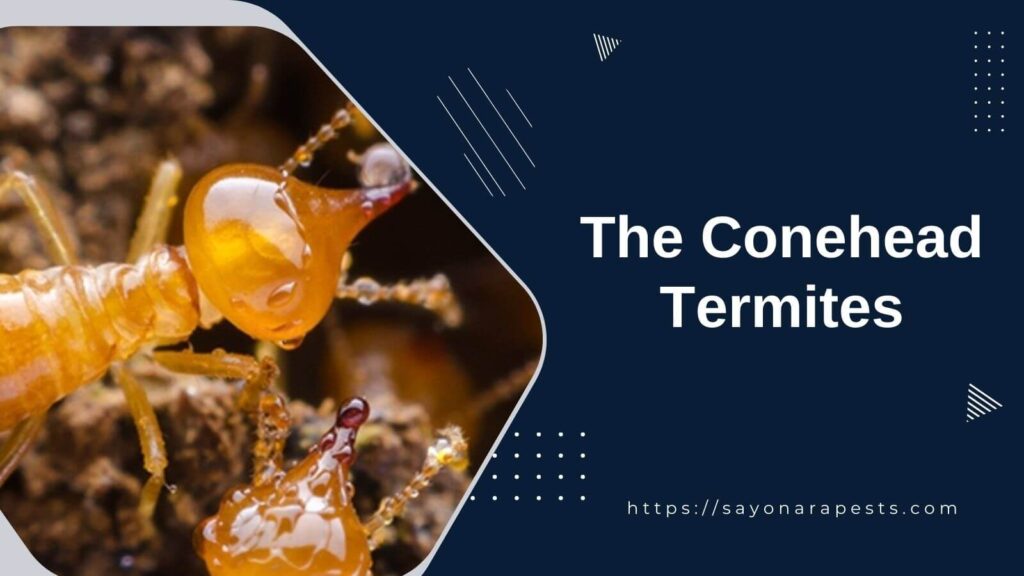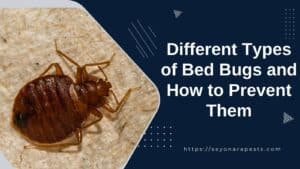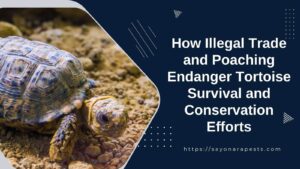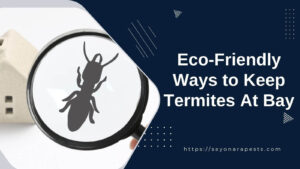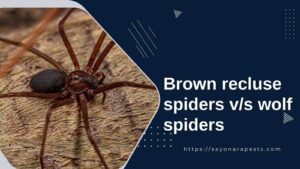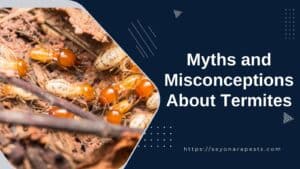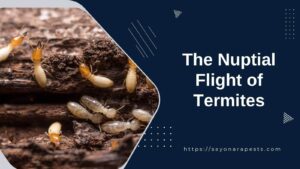Scientists and homeowners alike are becoming more concerned about a type of termite known as the conehead termite, which is something of a mystery in the world of insects.
These fascinating animals, who have heads shaped like cones and are easily distinguished by this trait, have the remarkable capacity to wreck structures, which can result in significant financial losses and ecological disturbances.
The destructive capability of conehead termites is superior to that of a great many other termite species, which is the primary reason for their importance.
As a result, it is of the utmost significance to get a grasp of the subtleties of their behavior, discover the secrets of the habitats they favor, and devise efficient management techniques in order to lessen the influence that these organisms have on human society and the ecosystems in which they live.
The objective of this essay is to engage in an exploration voyage into the mysteries that surround conehead termites, shining light on their mysterious nature and unraveling the veil of ambiguity that shrouds the existence of conehead termites.
We want to have a complete grasp of these evasive critters, so we will investigate their complex behavioral patterns, dissect the components that make up their favored habitats, and evaluate the effectiveness of various methods of pest management.
Homeowners, experts in the field of pest management, and researchers may empower themselves with the knowledge to battle the ongoing danger presented by conehead termites and protect the structural integrity of their homes via the efforts of this undertaking.
Get ready to go on an enthralling journey into the world of conehead termites, where their covert methods and mysterious regions will be brought into the light.
Prepare yourself for an excursion that will explore the labyrinthine passageways of their behavior, analyze the complicated dynamics of their choice of habitat, and evaluate the many tactics that have been implemented in the management of their population.
We are going to tour the amazing territory that these secretive animals call home, from the very foundations of their social organization to the depths of their underground abodes.
Join us as we solve the mystery that is the conehead termite and discover the mysteries that lay hidden behind the cone-shaped heads of these insects.
Identification of Conehead Termites
Conehead termites, known scientifically as Nasutitermes corniger, exhibit a fascinating array of physical characteristics that set them apart from other types of termites. These distinctive features enable keen observers to differentiate them with relative ease.
To discern conehead termites from their counterparts, one must delve into the intricacies of their morphology and behavior.
The foremost attribute that distinguishes conehead termites is their unique head shape. True to their name, conehead termites possess an elongated, conical head, which stands in stark contrast to the more rounded heads of other termite species.
This defining characteristic is particularly pronounced in the soldier caste of conehead termites, where the head shape serves as a weapon of defense.
The conical projection extends forward from the head, resembling a nose-like structure known as a “nasus” or “nasus cone,” hence their scientific name.
In addition to their distinct head shape, conehead termites exhibit a coloration that aids in their identification. While other termites typically display a pale or translucent appearance, conehead termites possess a dark brown or blackish hue.
This darker coloration, coupled with their elongated heads, presents a striking visual contrast that allows for easy differentiation from other termite species.
To effectively identify conehead termite damage and signs of infestation, one must remain vigilant and attuned to subtle indicators. Conehead termites are known for their voracious appetite and rapid wood consumption, leading to extensive damage in relatively short periods.
One of the key signs of conehead termite infestation is the presence of small, irregular holes in wooden structures. These openings serve as entry points for the termites and indicate their destructive presence within.
Additionally, conehead termites leave behind a distinctive pattern of wood damage. Unlike some other termite species that excavate intricate tunnels and galleries, conehead termites create a series of interconnected tunnels that appear more haphazard and chaotic.
These tunnels often cut across the grain of wood and can be identified by their irregular shape and rough texture. Observing these peculiar patterns of wood damage can be a strong indication of a conehead termite infestation.
Moreover, conehead termites exhibit a unique behavior that aids in their identification. Unlike subterranean termites that rely on mud tubes for above-ground travel, conehead termites construct “shelter tubes” or “shelter tubes” made of soil, feces, and wood particles.
These tubes allow them to move freely across various surfaces, including walls and tree trunks. Detecting the presence of these shelter tubes is a crucial clue in identifying conehead termite infestations.
The identification of conehead termites revolves around their distinctive physical characteristics and the signs they leave behind. Their elongated, conical heads and dark coloration set them apart from other termite species.
By recognizing the irregular holes, chaotic patterns of wood damage, and the presence of shelter tubes, one can effectively identify conehead termite infestations.
As awareness grows about these unique termites, understanding their identification becomes paramount in preventing and mitigating their destructive impact on structures and natural habitats.
Biology of Conehead Termites
Conehead termites are fascinating to study because their biology is mysterious and they do strange things. When we look deeper into the lives of these amazing insects, we find a complicated life cycle that shows how well nature is made.
Understanding the nature of conehead termites not only helps explain how they reproduce, but it is also a key step in coming up with effective ways to get rid of them.
To understand the biology of conehead termites, we must first figure out how they live, which is a fascinating trip through different stages of growth. During the swarming season, the process starts with the appearance of alates, which are sexual adults with wings.
These alates go on an amazing journey to find a good partner. They take part in complicated wooing routines and sensory exchanges that lead to a royal pair.
Once the royal couple is set, they go to a new area to start a new colony. The pair, which is made up of a queen and a king, is very important in termite society. The queen is in charge of reproduction and is able to lay thousands of eggs every day.
The king helps her do this, making sure that the colony will continue to grow. This ability to have lots of babies shows how fertile conehead termites are and how quickly they can grow their numbers.
As the colony grows, the queen’s loyal followers work hard to take care of her and the new babies. Termites go through a process called transformation, in which they change from eggs to nymphs to adults.
The majority of the colony lives in the worker group, which is in charge of building and keeping complex tunnel systems, looking for food all day long, and taking care of the young. Soldiers protect the colony from possible threats with their strong mouths and defense skills.
Understanding the nature of conehead termites gives us important information about how they reproduce, which helps us come up with ways to get rid of them.
Scientists and people who work to get rid of pests can find weak stages and target them for help if they know how the life cycle and reproduction work.
For example, you can stop termites from spreading by making it hard for them to mate during the swarming season or by taking steps to stop them from starting new colonies.
Also, experts can look for new ways to get rid of termites when they know a lot about how they live. By figuring out how termites talk to each other, for example through hormones or sounds, it becomes possible to come up with ways to disrupt their social stability and ability to reproduce.
This information can help people come up with solutions that are safe for the environment and last a long time. This will cut down on the use of dangerous chemicals and make it easier to get rid of termites.
In the end, the genetics of conehead termites reveals a fascinating world of complex life cycles and ways to reproduce.
Studying and understanding their nature is important for coming up with effective ways to control them, so we can stop them from reproducing and limit the damage they can do.
By using our knowledge and creativity, we can handle the mysterious world of conehead termites and make it easier for them and us to live together.
Conehead Termite Behavior
Conehead termites, which are called Nasutitermes corniger in the scientific world, are fascinating to entomologists and other experts because of how they act.
In recent years, there has been a lot of interest in these termites, which are mostly found in some parts of the Caribbean. This is because they eat in interesting ways and have a complicated social structure.
When it comes to how they eat, conehead termites are very different from their other termite cousins. Conehead termites have a wider range of foods to choose from than standard underground termites, which eat mostly wood.
These animals eat a lot. They used to only eat wood, but now they also eat live plants, bushes, and even leaf litter. This gives them a big edge when it comes to changing to different ecological niches. It also makes them stronger and more likely to survive.
Conehead termites’ social structure adds an interesting layer of complexity to how they act. Many termite species are known for their caste system, in which workers, troops, and breeding individuals all have different jobs.
Conehead termites, on the other hand, are organized in a slightly different way. They have a fairly simple caste system, with only troops and people who make babies. There is no specific class for workers. This unusual social setup suggests a different way of dividing up work and could change the way the termite colony works.
Conehead termites act differently than other types of termites in a number of ways. The first thing that makes them different from most other termite species is that they build their homes above ground.
Conehead termites build cone-shaped mounds on the soil’s surface, which are easy to see and catch the eye of anyone who sees them. This shows how well they can adapt to different settings and live in many different places.
Also, compared to other types of termites, conehead termites are more aggressive. Their soldier group has strong jaws and a strong chemical defense system, which lets them protect their colonies with all the force they can muster.
This increased violence is especially clear when colonies of conehead termites meet colonies of other termite species, which can lead to heated territorial disputes and possible wars.
The fact that conehead termites have a wider range of food choices, a different social structure, build their nests above ground and are more aggressive shows how diverse the termite world is. Understanding their behavior gives us important information about how termite groups work ecologically.
This helps us learn more about the complex interactions that shape ecosystems. As scientists learn more about how conehead termites behave, the mysterious world of these amazing insects opens up, showing a complex web of adaptation, specialization, and biological importance.
Habitat of Conehead Termites
These amazing bugs have a well-known reputation for being able to adapt to different environments and grow there.
To fully understand the complicated world of conehead termites, it is important to learn about their normal habitat, which includes the type of soil and temperature they like as well as the unique ways they build their nests that make them different from other termite species.
Conehead termites have a wide range of tastes when it comes to where they like to live. They are known for being able to grow in a wide range of soils, from soft loam to soils with a lot of clay.
Conehead termites are very adaptable, unlike many other termite species that can only live in certain types of soil. They have been found in soils with different shapes and structures.
Because of their ability to change and the fact that they eat anything made of cellulose so quickly, conehead termites are a force to be reckoned with in both cities and farms.
In terms of temperature, conehead termites seem to be able to live well in both warm and subtropical areas. People have seen these hardworking insects in places with high humidity and high temperatures as well as places with more moderate weather.
Conehead termites are found in many places around the world because they can live in a wide range of climates. This allows them to set up colonies both near the coast and in the middle of the country.
Conehead termites are different from other types of termites in how they build their nests. This is one of the things that makes them stand out. Unlike most termites, which build their nests underground, conehead termites prefer to build their nests above ground.
This makes them more obvious and easier to find. These obvious nests, which are often called “carton nests,” are made of feces, dirt, and other organic materials that are carefully mixed together to form a hard, safe structure.
Also, conehead termites have a marked tendency to build more than one nest within their colony. This type of activity is called “satellitism,” and it involves building a second nest close to the main one.
The satellite nests are another way for the colony to protect itself from dangers like predators or bad weather. This makes the colony more resistant to threats like these.
Conehead termites are different from other termite species because they can build and keep up more than one nest. This shows how adaptable and well-organized they are.
Conehead termites have a lot of interesting traits that set them apart from other types of termites. Because they are flexible, they can grow well in different types of soil, and their ability to survive in different climates has helped them spread all over the world.
Also, they are different from other kinds of termites because they build their nests in cartons above the ground and start secondary colonies.
By looking into the complicated world of conehead termites and learning about where they like to live and how they build their nests, we can learn a lot about how adaptable and tough these fascinating creatures are.
Damage Caused by Conehead Termites
When it comes to the constant destruction that Mother Nature throws at us, conehead termites stand out as some of the most sneaky and dangerous enemies, especially when it comes to the stability and integrity of buildings and other structures.
The scary effects of these voracious insects’ never-ending rampage are nothing short of catastrophic. They leave a path of destruction in their wake that not only bothers homeowners but also makes property managers wake up in the middle of the night in a cold sweat out of fear.
Nasutitermes corniger, which is the scientific name for conehead termites, have an unmatched ability to wreck any building they happen to come across.
With their razor-sharp jaws and insatiable hunger for cellulose-rich materials, these tiny monsters burrow relentlessly into the foundations of our homes, destroying them from the inside out. It’s amazing how much damage these tiny thieves can do. They can cause major structural damage and make buildings unsafe for people to live in.
The effects of a termite infestation by conehead termites are far-reaching and complicated, making homeowners and property managers nervous.
First of all, the financial cost is astronomical, because the repairs needed to fix the damage done by these arthropods can be so expensive that they use up resources and savings.
Also, the emotional burden can’t be understated. Watching your beloved home slowly fall apart can be a very painful and helpless experience.
Conehead termites are a constant source of worry and stress for people who own their own homes. The fear that one day they will wake up and find that a wall that used to be solid is now just a hollow shell makes them feel vulnerable in every part of their lives.
Faced with this constant threat, the safety of their families, the privacy of their homes, and the safety of their most prized possessions are all at risk. The fight against conehead termites turns into an all-out war, a never-ending effort to protect what is most important.
When it comes to protecting other people’s property, property managers are in a tough spot when they have to deal with the possibility of damage from conehead termites. Not only could there be financial losses, but there could also be damage to reputation and loss of trust.
In a time when reputation is very important, just a rumor that a person or company manages a property with a termite problem can ruin their reputation in the industry and cost them clients, partnerships, and other chances.
The damage that conehead termites do to buildings and structures is very scary for both homeowners and people who run rental properties.
The relentless attack of these small but persistent pests can destroy the very structure of our homes, leaving a wake of destruction that goes far beyond the physical world. It’s a battle that needs all of our attention.
It’s a battle against forces we can’t see, and the stakes are high. If we lose, it will cost us a lot.
Environmental Impact of Conehead Termites
The damage that conehead termites do to the environment can’t be overstated. These insects can do a lot of damage to ecosystems, especially in places where they have been brought from outside their natural range.
As conehead termites move around and start new colonies, they can change the make-up and structure of plant communities in a way that sets off a chain reaction of ecological effects.
One of the biggest worries about conehead termites is that they can eat many different kinds of plants. This kind of random eating can hurt populations of native plants.
When conehead termites eat a lot of plants, they can throw off the delicate balance of ecosystems, which could cause a lot of plant species to go extinct.
When plant resources are used up, it can also hurt other animals that depend on those plants for food, shelter, or places to nest. This makes the environmental problems even worse.
Conehead termites don’t just hurt plants. They can also hurt animals. These invasive pests can also hurt native animal populations in big ways. Many animals, like birds, reptiles, and mammals, eat termites because they are an important food source.
The damage that conehead termites do can mess up food chains and make it harder for animals to find food. Because of this, the number of native animals can go down, which could cause a larger ecological imbalance.
But it’s important to deal with conehead termite problems in ways that don’t hurt the environment too much. Integrated pest management (IPM) techniques offer an all-around way to get rid of termites that is also good for the environment.
IPM tries to control termite populations effectively while doing as little damage as possible to the environment. It does this by using a variety of methods, such as physical barriers, biological controls, and targeted chemical treatments.
Using non-toxic or low-toxicity treatments is a key part of making conehead termite control plans that are good for the environment. Chemical pesticides that have been used for a long time may harm organisms that are not their main target and have long-lasting effects on ecosystems.
So, alternatives like botanical insecticides made from plant extracts or biological controls, like bringing in conehead termites’ natural predators or parasites, can be looked into to reduce the damage to the environment.
The use of preventive measures and early detection systems is another important thing to think about. By finding conehead termite infestations when they are still small, control efforts can be more focused, and less harmful treatments can be used.
Regular monitoring and surveillance can help find termite activity quickly so that it can be stopped and the damage to native species is kept to a minimum.
Education and awareness campaigns are also very important in reducing the damage that conehead termites do to the environment.
The spread of conehead termites to new areas can be stopped by letting people know about the possible dangers these invasive insects pose and encouraging responsible behavior, like not moving infested items.
More public participation and involvement in efforts to get rid of termites can lead to more effective and environmentally friendly management plans.
In the end, conehead termites can have a big effect on the environment, hurting native plant and animal species.
But the environmental effects of conehead termite infestations can be kept to a minimum by using integrated pest management methods, focusing on non-toxic or low-toxic treatments, promoting preventive measures, and educating the public.
To protect our natural environments from the harmful effects of these invasive pests, we need to find a balance between getting rid of termites and keeping the environment healthy.
Economic Impact of Conehead Termites
The damage caused by conehead termites is so expensive that it costs billions of dollars every year to fix and fix up.
These pests can do a lot of damage because they eat the very foundations of buildings. Over time, this weakens the buildings’ strength and stability, which are important to their value.
The damage to homeowners and property owners comes in many forms, including the direct costs of fixing termite-damaged areas and the indirect losses caused by a drop in property values.
Once conehead termites are found, it’s a race against time to stop the damage from getting worse, which often means acting quickly and spending a lot of money.
Conehead termites can do a lot of damage to structures, like destroying wooden supports and weakening load-bearing parts. They can also damage insulation and electrical systems, which can cost a lot to fix and cause problems for a long time.
Also, the economic effects go beyond the homeowners themselves and affect the whole real estate market. When there are a lot of conehead termite infestations in an area, it can hurt the value of the homes there.
People who want to buy a home are likely to stay away from areas that have had termite problems in the past because they might have to pay a lot of money to fix the problem.
As a result, there is less demand for homes in infested areas, which causes property values to drop and gives homeowners less chance to get their money back.
Effective control of conehead termites is important for keeping property values high and keeping economic losses to a minimum. By taking steps to prevent and fight termite infestations, homeowners and the real estate market as a whole can reduce the financial damage they cause.
By putting regular inspections, early detection of termite activity, and targeted treatment plans at the top of their to-do lists, property owners can stop potential infestations in their tracks, limiting the amount of damage and costs that come with them.
Investing in professional termite control services is not only a smart way to protect property investments, but it also helps communities build long-term economic stability.
By stopping the spread of conehead termites and keeping buildings in good shape, property values can be kept at their highest levels.
This boosts confidence in the real estate market and helps the economy grow in a sustainable way. Comprehensive termite control programs also help neighborhoods and cities be more stable, which makes them more appealing to people who want to live there or invest in them.
Overall, the economic effects of conehead termites are a big worry, since they cause damage to property and lower its value, which both cost a lot.
Because the financial costs are so high, controlling termites must be done in a proactive way, with a focus on regular inspections, quick detection, and effective treatment.
By putting these steps first, homeowners and property owners can reduce economic losses, keep property values high, and make the real estate market more stable in the long run.
Control Strategies for Conehead Termites
To stop these wood-eating pests from causing damage, a number of control methods, both chemical and non-chemical, have been developed. Each strategy has its own pros and cons that depend on the situation and the desired result.
Chemical methods have been shown to be effective at stopping the spread of conehead termites. One common method is to use termiticides, which are chemicals that disrupt the termite’s central nervous system and kill it.
These termiticides can be sprayed on infested buildings or injected into the soil around them. By putting up a chemical barrier, they stop termites from getting in and, if done quickly enough, can even get rid of existing colonies.
But termiticides are very effective against conehead termites, but the chemicals they contain are often bad for the environment. When termiticides are used without thought, the soil can become contaminated, which can be bad for human health.
Also, some termiticides have been known to hurt good bugs and wildlife, so you should be careful when using them.
Non-chemical control methods are an alternative to chemical methods, and they focus on methods that are good for the environment and will last. Physical barriers are a common non-chemical method of termite control that involves building physical barriers to stop termites from getting in.
These barriers can be put up when a building is being built or added later to stop infestations that have already started. Physical barriers can be made of different things, like stainless steel mesh, sand, or crushed rock.
They work by keeping termites from getting into the building. Still, physical barriers aren’t foolproof because termites are persistent and can find other ways to get in. This means that they only work if they are carefully set up and kept up.
Biological control agents, such as nematodes or fungi, which target and kill conehead termites, are another way to get rid of them without using chemicals. The natural enemies of termites are used by these agents to break up their colonies and stop the spread of infestations.
Microscopic roundworms called nematodes are put into termite colonies, where they infect and kill the termites.
This keeps the population from growing too much. In the same way, areas with termites can be treated with entomopathogenic fungi, such as Metarhizium anisopliae, which infect the termites and kills them.
Biological control methods are good for the environment because they only hurt the conehead termites they are meant for and not anything else.
But their success can depend on things like how the environment is and how well the control agents can get to the area where they are needed.
The goal of integrated pest management (IPM) is to get rid of termite infestations in a way that is effective and efficient.
IPM uses many different methods, such as monitoring, changing the habitat, and using both chemical and non-chemical methods of pest control in the right places. This whole-systems approach tries to avoid relying too much on a single method of control.
Instead, it combines the best parts of several methods, each of which is tailored to the type of infestation and the environment.
By using IPM, pest managers can keep conehead termite populations under control while minimizing the risks that come with each control method.
Still, IPM is hard to do well without a lot of knowledge and experience, so it is best left to professionals who know how to get rid of pests.
There are many ways to stop and get rid of conehead termite infestations. Chemical methods, like termiticides, are fast and effective, but their effects on the environment need to be carefully thought through.
Physical barriers and biological control agents are examples of non-chemical strategies that can be used as long-term alternatives. However, they may need to be used carefully for the best results.
Integrated pest management is a comprehensive method that uses more than one strategy to get rid of conehead termite infestations as quickly as possible.
In the end, the best way to get rid of termites depends on the specific situation, taking into account effectiveness, long-term viability, and possible risks.
Prevention and Management of Conehead Termites
Conehead termites, those sneaky bugs that hide in our homes, can cause a lot of damage if they are not stopped. Because of how much they eat and how much damage they can do, it’s important to stay on top of prevention and act quickly when there’s an infestation.
As we go deeper into the confusing world of conehead termite prevention, here are some tips to help you learn more about these silent destroyers and strengthen your defenses against them.
First and foremost, you need to build a fortress that termites can’t get into. Start by using materials that are naturally resistant to termite infestations, like concrete or steel. Conehead termites can’t get into the very structure of your home because these strong materials act as strong barriers.
Also, make sure that all construction joints and cracks are properly sealed so that these smart pests have nowhere to hide. Taking these preventive steps while your house is being built is a smart way to keep conehead termites from getting in.
As a homeowner, you should always be on the lookout for termites. This is the best way to keep them out. Regular inspections by both homeowners and professional exterminators are important for finding early signs of a conehead termite infestation.
Set up a regular routine where you carefully check your property for signs like hollowed-out wood, mud tubes, or dropped wings. Remember that these pests have an uncanny ability to eat your home’s foundation without making a sound, so it’s very important to stay vigilant.
If you find out that you have a problem with conehead termites, you need to act quickly and decisively. Some homeowners may be tempted to try to get rid of termites on their own, but it is usually best to hire a professional who knows what they are doing.
These experts know how to fight off conehead termites because they have the knowledge, experience, and specialized tools to do so.
By using their services, you can be sure that the infestation will be taken care of completely, reducing the chance that your property will be damaged further.
Choosing a termite control expert shouldn’t be a quick decision. Instead, it should be a careful process done with the utmost care.
Check out candidates carefully by looking at their qualifications, certifications, and past experience with dealing with conehead termite infestations.
Ask for recommendations from people you know and trust, and ask for references from past clients to see how well their services work. Remember that hiring a professional to take care of your home is an investment in its long-term health.
In the end, preventing and getting rid of conehead termites requires a constant commitment to protection and watchfulness. Homeowners can protect their homes from these silent thieves by using the right building methods and having regular inspections.
But if there is an infestation, it is very important to get help from a qualified termite control specialist.
By taking these preventative and management steps, homeowners can protect their homes from the relentless attack of conehead termites and make sure that their homes will last and be safe.
Research and Development of Conehead Termite Control Strategies
Researchers and scientists have spent a lot of time trying to figure out what makes these creatures so mysterious. They are also trying to come up with new ways to stop them from being so destructive.
In the field of conehead termite control, there are a lot of different research projects going on all the time that are trying to find new ways to fight this pest.
Scientists are studying the complex ways that conehead termites act in order to figure out how they cause infestations.
Researchers are slowly figuring out the strange language that termites use to coordinate their destructive work by studying their colonies’ complex social structures and communication channels.
With this kind of information about how they act, it’s easier to come up with ways to control them that will disrupt their society and make it harder for them to do a lot of damage.
Also, the arrival of new technologies has changed the way conehead termite control research is done. With high-resolution microscopy and thermal imaging, for example, we can see into the hidden world of termite activity in a way that has never been done before.
Researchers can map the complex tunnels and nesting sites of conehead termites with these cutting-edge tools, which gives them a full picture of how they move around in space.
With this information, scientists can make strategic baiting systems and physical barriers that make it hard for termites to move and stop them from spreading in buildings that are weak.
Also, ongoing research into conehead termite control has the potential to shed light on the environmental factors that lead to termite infestations.
By looking at how things like humidity levels and changes in temperature affect each other, researchers can figure out the environmental triggers that make termite populations grow.
This information is very helpful for coming up with proactive ways to get rid of conehead termites that take advantage of their weaknesses when they are at their most vulnerable stages. This reduces the need for reactive measures, which are often less effective and cost more.
Importantly, the results of research on how to get rid of conehead termites can help control efforts in a lot of ways. Researchers can improve and make control methods more effective by bridging the gap between scientific discoveries and real-world uses.
This iterative process makes sure that both pest control professionals and homeowners can get the most up-to-date information and ideas, making it easier for them to fight off conehead termite infestations.
Researching and developing ways to get rid of conehead termites is a dynamic and multifaceted process that is driven by a never-ending quest for knowledge and new ideas.
Researchers are changing the way pest control is done by figuring out how conehead termites behave, using the power of new technologies, and looking into the ecological factors that lead to their infestations.
The relationship between ongoing research and real-world applications will hopefully give people and communities the tools and strategies they need to fight off conehead termite infestations, protect the structural integrity of buildings, and give homeowners peace of mind for years to come.
In the end, this detailed article has shown how complicated the world of conehead termites is. It has also shown how they are different from other termites and how bad they are for human habitats.
We’ve talked a lot about what makes conehead termites unique, like how they hunt for food aggressively, how quickly their colonies grow, and how amazing it is that they can build nests above the ground.
Because of these things and the fact that they eat wood like crazy, conehead termites are a dangerous threat to the stability of homes and other buildings.
You can’t say enough about how important it is to know about conehead termites. By learning about their biology, behavior, and preferred habitats, we can learn a lot about their life cycle and the factors that lead to their growth.
This kind of information is the basis for making effective control strategies that can limit their destructive effects and keep our built environment from being severely damaged.
The most important thing is to start using these control strategies as soon as possible. Conehead termites have shown to be very aggressive and flexible, able to start new colonies in places where they hadn’t been before.
Their quick spread is a big problem not just for individual homes, but also for whole neighborhoods and communities.
Homeowners, pest control experts, and policymakers must work together and take preventative steps to stop infestations and lessen the financial and emotional damage caused by conehead termites.
Also, there should be public awareness campaigns to teach people how to spot the signs of conehead termite activity and how important it is to find them early. The damage done by these sneaky pests can be greatly reduced if they are found and dealt with quickly.
Equally important is the ongoing research and development of new ways to get rid of termites. These methods should be eco-friendly and long-lasting, and they should use as few harmful chemicals as possible while still getting rid of termite colonies.
In the end, fighting conehead termites requires a multi-pronged approach that combines scientific knowledge, community involvement, and good management techniques.
By taking this whole-systems approach, we can protect our homes, keep our architectural history alive, and create a place where conehead termites are no longer a threat.
Now is the time to act, for the health and longevity of our buildings and for the peace of mind of all homeowners.

